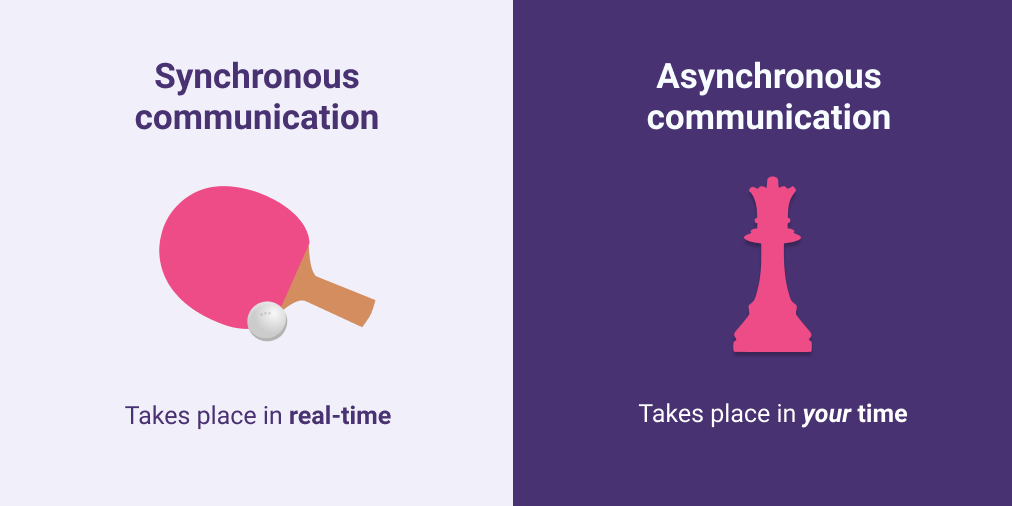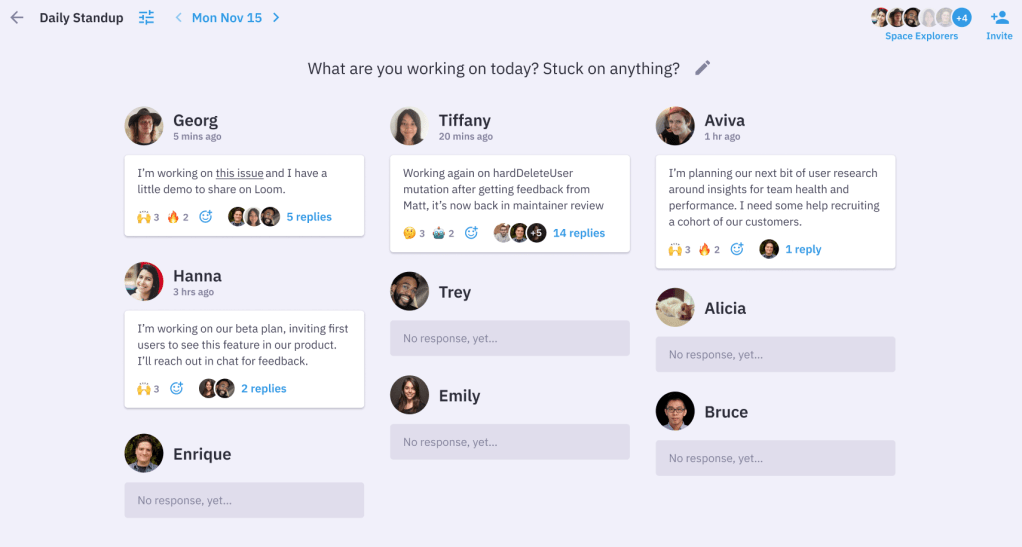Standup Bots vs Standup Apps: Which Should You Pick?

Slack standup bots and online standup tools are now the most common alternative to synchronous standups held in-person or on a video call.
These tools seek to counter common complaints that “standups are too long” or that time zones are inconvenient by making standup meetings primarily asynchronous.

If you’re reading this, you probably know you want to move away from regular standups. But do you go for a simple purpose-built standup bot or a richer experience via a dedicated standup tool?
In this blog, we’ll look at all the available tools for running remote or async standups and discuss the pros and cons of each. That way you can make an educated decision about which kind of tool to try with your team.
💡 Check out Virtual vs. Async Standups: Which is Right For Your Team? for a general introduction to asynchronous standups.
What is a standup bot?
A standup bot runs in a dedicated channel of a messaging app like Slack or Teams and asks a set of standup questions at a fixed time every workday.
What did you do yesterday?
What will you do today?
What (if anything) is blocking your progress?
Even though the Scrum Guide doesn’t mandate these three questions for the daily standup anymore, most Slack standup bots ask some variation of them by default – even if you’re not a Scrum team.
Team members usually have a time window of at least several hours to answer those prompts, allowing them to do so at a moment that’s convenient for them.
Responses are then spooled up in a thread for the team to review at their leisure.
Popular standup bots include:
What are standup apps?
Standup apps and standup tools are standalone products for facilitating synchronous or asynchronous standups with your team. Generally they are more sophisticated than a Slack bot that pings an update into a channel and have more options for customization. They may include built-in facilitation tools.

A purpose-built standup app usually exists primarily outside Slack or MS Teams as a standalone tool.
In Parabol’s purpose-built standup app you can share updates when it suits you, set a cadence that works for your team, and see everyone’s contributions in one view. You can also share richer information to keep your teams aligned and customize the prompt beyond variations of Scrum’s three questions to keep your updates fresh and engaging.
Many standup apps allow the final results of the standup to be shared back into Slack or MS Teams via integrations.
Popular standup apps include:
💡 Parabol’s async standup tool displays everyone’s update in one grid view, so it’s easy to see what others are sharing. Updates don’t get lost in Slack or buried in a thread.
Pros and cons of standup bots vs. standup apps
You already know that you need to adapt the regular standup approach for async or remote standups. You’ll need to pick a tool to run them. Here’s a comparison of the pros and cons of each type of tool.
| Features | Standup App (Parabol) | Standup Bot |
|---|---|---|
| Customized and Suggested Questions | ||
| Built-in Meeting Structure | ||
| Discussion Threads | ||
| Anonymous Comments on Discussion Threads | ||
| Automated Summary | ||
| Slack/Mattermost Integrations | ||
| GitHub and Jira Integrations | ||
| CSV Export |
When a Slack standup bot is beneficial
- Your team already uses Slack or another messaging app, and you don’t want to add another tool to your stack.
- You’ve connected most of the software your team uses to Slack and you want to be able to reference or use those integrations within your standup channel.
- You use the daily Slack prompts as a reporting function or status update. Answering the same questions every day is effective and helpful for your team or organization.
- You don’t mind about updates being lost in threads and don’t need a record of standups.
When a standup app is right for your team
- You want an app that upholds the benefits of a regular standup in an async environment.
- You like to change your daily standup questions regularly without having to go into an admin panel each time to do so.
- You want to prevent updates getting lost in threads and people not engaging with them.
- You want to be able to easily spool up learnings and trends and get a dedicated artifact/summary at the end of the standup period.
Try running your next standup in Parabol – it’s free!
We’ve got a horse in this race. And there’s a reason why. We tried every approach and tool for asynchronous standups ourselves but found that most:
- Disrupt your team’s flow of work
- Involve sitting through long updates
- Compromise those in different time zones
- Get off track or run over time
- Felt like more documentation vs improving team connection
With Parabol, you can have the best of both the real-time and async worlds.
If you’re on a remote team or have colleagues in other countries and time zones, Parabol is the best way to run your next daily meeting. Our tool is free for up to two teams – give it a try today. 😇
👫🏽 Check out our Daily standup hub for an overview of all our resources on how to improve your daily standups






